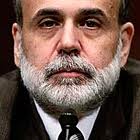
But the folks currently running the Fed -- who have never been what you would call students of the Law of Unintended Consequences -- are disappointed that mortgage lenders -- especially the big banks -- aren't using the lower borrowing rates (created by Fed policy) to lower rates for consumers, or even to make more mortgage loans.
From Inside Mortgage Finance:
"Some Fed policymakers are apparently grumbling that the agency's efforts to push down mortgage interest rates is helping banks as much or more than consumers. The concern is that mortgage lenders, led by the big banks, aren't passing enough of the current interest rate savings to borrowers and are instead fattening their own lending profits. Last month, the Fed purchased about 48 percent of new agency MBS issuance as part of an effort to lower mortgage rates and increase consumer lending. While that Fed buying helped push down mortgage rates early in the fall, it hasn't had much impact on the primary market in recent weeks despite lower rates in the secondary market. Fed policymakers hope that increasing competition from smaller lenders and non banks will prompt a further drop in mortgage rates. But some market observers say that might be wishful thinking as all lenders are becoming very comfortable with the fat margins found in making residential mortgages."
I've written before about who caused the housing bust and the financial crisis, so I don't need to go into all that again. It really shouldn't take a genius to figure out that if you make money cheaper for the lending industry, and make it simultaneously dangerous to lend to any but the absolutely safest borrowers, you create the conditions for exactly what is happening -- fewer loans being made, little competition or incentive to make more loans, and bigger margins for lenders on smaller volume of loans.
Here's the silver lining for originators: these are the kind of market conditions that will put a premium on the services of highly professional and extraordinarily competent loan officers who build their reputation on the fact that they don't take on bad loans, and they close every loan they submit -- because they know what they're doing and they don't take "no" for an answer.
Have you been tracking your success rate at closing the loans you turn in? If not, you might want to start, and I would take the opportunity presented by the time of year to go back through at least all the loans you submitted this year. Below, you can download a free spreadsheet/form you can use to track your proficiency in this important metric. And the next time a Realtor or prospective client asks you what makes you better than the next LO, you'll have something to show them that I'm willing to bet 95% of your competition won't.
| loan_submission_-_closing_results.xlsx |



 RSS Feed
RSS Feed